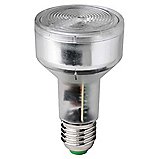As you say "average" has no defined meaning. It can refer to mean, median or mode. And mean can be arithmetic, geometric or harmonic.BAS, as I'm sure you know, 'average' is just a general term which covers a whole host of summary statistics
A very common curve for things made by man is the bathtub.Echoes, it is extremely unusual for survival times (or times to failure) to be anything like Normally distributed (exponential distributions, or ‘fancy’ ones like Weibull and other distributions, are much more common), either in engineering or biology. If they were Normally distributed, then, of course, the arithmetic mean and median would be identical.
IHANI.I'm not sure what 'average lifespan' is quoted in relation to consumer products (like lamps) - does anyone know? It wouldn't surprise me if it was the same MTBF/MTTF that electrical engineers are used to using. The marketing people would probably like that, too - since the 'long upper tails' of most failure distributions (i.e. a few of the items tend to last 'for ever'!) is likely to result in mean failure times being appreciably longer than median ones!
My gut feel for lamps is that it's probably quite a complicated curve - I can envisage it starting like a bathtub, i.e. a few early life failures with the line rapidly dropping, and then a significant period where it is some kind of normal/poisson hybrid, and ending with something rapidly increasing - exponential-ish.
I do know that in reality the "average life " quoted by lamp manufacturers is hard to verify (funny, that), and that you'd need to have a statistically significant population of lamps of the same type and run under identical conditions to those which the manufacturer assumes to see if you agree.
Apparently trivial things can make a significant difference - I'm told that incandescent lamps which are overvolted by less than 5% have their life almost halved, so if you buy lamps which are rated for 230V and use them here where our voltage is actually more likely to be 240V, you're very unlikely to see the average life which the maker quotes.
Westie might be able to tell us how spiky our supply can be, but would anybody be surprised to learn that a single spike could knacker the electronics in a mass-market CFL?



